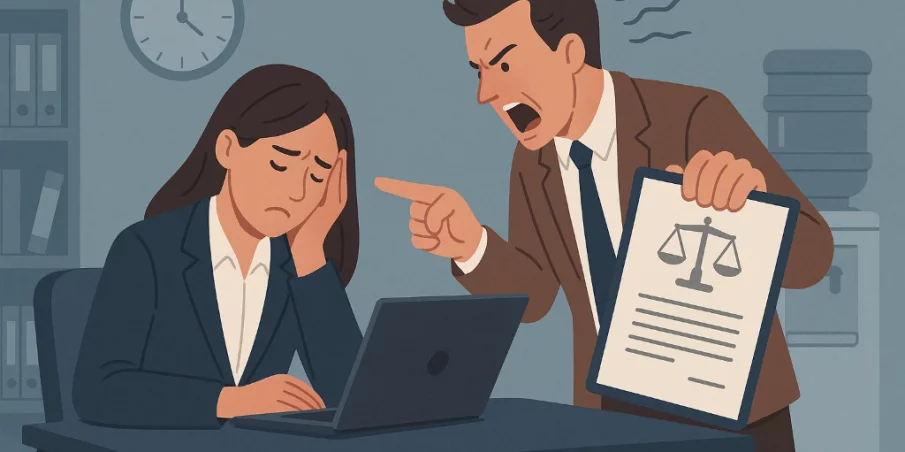Hostile Work Environment Lawsuit: Your Guide to Rights and Actions

What Is a Hostile Work Environment?
A hostile work environment isn’t just about having a bad boss or dealing with the occasional rude coworker. It’s a legal term that describes a workplace where harassment or discrimination is so severe or frequent that it makes your job unbearable. This isn’t about minor annoyances—it’s about ongoing behavior that would make anyone feel threatened, humiliated, or unsafe at work.
Imagine walking into your office and dreading every interaction because of constant offensive jokes, unwanted comments about your appearance, or being singled out because of your race, gender, or age. If this sounds familiar, you might be wondering if your experience qualifies as a hostile work environment—and if you have grounds for a lawsuit.
Legal Definition and Key Elements
Protected Characteristics
The law protects employees from harassment based on certain characteristics, including race, color, religion, sex, national origin, age, disability, and more. If the unwelcome behavior targets you because of one of these, it could be the basis for a lawsuit hostile work environment claim.
Severe or Pervasive Conduct
Not every rude comment or awkward moment is illegal. The behavior must be either severe (like a single, extremely offensive act) or pervasive (repeated over time). For example, a one-time inappropriate joke probably isn’t enough, but ongoing harassment or repeated slurs might be.
Employer Responsibility
For a lawsuit hostile work environment to succeed, you usually need to show that your employer knew about the harassment and didn’t take steps to stop it. This means reporting the behavior is important, even if it feels uncomfortable.
Common Examples of Hostile Work Environment
Let’s break down what this can look like in real life. Maybe your supervisor keeps making sexual comments, or coworkers use racial slurs and management ignores your complaints. Perhaps you’re being mocked for a disability, or you’re constantly passed over for promotions because of your age. These aren’t just bad manners—they could be illegal.
On the other hand, if your boss is just tough or you don’t get along with a coworker, that alone doesn’t create a lawsuit hostile work environment. The law is focused on discrimination and harassment that’s tied to those protected characteristics.
How to Prove a Hostile Work Environment in a Lawsuit

Documentation Is Key
If you’re thinking about taking legal action, keeping good records can make all the difference. Write down every incident: what happened, when, who was involved, and who witnessed it. Save emails, texts, or any written evidence. The more details you have, the stronger your lawsuit hostile work environment case will be.
Reporting the Behavior
Most companies have a process for reporting harassment or discrimination. Follow these steps and keep copies of any complaints you file or responses you receive. This shows you gave your employer a chance to fix the problem.
Witnesses and Patterns
If coworkers have seen or experienced the same behavior, their statements can help support your claim. Courts often look for a pattern, so showing that others were affected can strengthen your lawsuit hostile work environment case.
What Happens If You Win a Hostile Work Environment Lawsuit?
Winning a lawsuit hostile work environment claim can lead to several outcomes. You might receive compensation for lost wages, emotional distress, or even punitive damages if the employer’s actions were especially bad. Sometimes, the court will order your employer to change its policies or provide training to prevent future harassment.
It’s also possible for the company to settle the case before it goes to court. Settlements can include money, changes to company policy, or agreements to rehire or promote you.
What Doesn’t Qualify as a Hostile Work Environment?
It’s important to know what isn’t covered by the law. Not every unpleasant situation at work is grounds for a lawsuit hostile work environment. For example, personality clashes, isolated incidents (unless extremely serious), or general workplace stress usually don’t meet the legal standard. The focus is on repeated, targeted harassment or discrimination tied to a protected characteristic.
Steps to Take If You Think You’re in a Hostile Work Environment
Start Documenting
Write down everything that happens as soon as you notice a pattern. Include dates, times, and details.
Follow Company Procedures
Report the behavior using your employer’s official process. This could be through HR, a manager, or an anonymous hotline.
Seek Support
Talk to trusted coworkers, friends, or family. Sometimes, others may be experiencing the same thing and can help back up your claims.
Contact the EEOC or a Lawyer
If your employer doesn’t fix the problem or retaliates against you for reporting, you can file a complaint with the Equal Employment Opportunity Commission (EEOC) or your state’s fair employment agency. Consulting an employment lawyer can help you understand your rights and what to expect from a lawsuit hostile work environment case.
How Long Do You Have to File a Lawsuit?
There are deadlines for taking action. In most cases, you have 180 days from the last incident to file a complaint with the EEOC, though some states give you more time. Missing these deadlines can mean losing your chance to bring a lawsuit hostile work environment claim, so don’t wait too long if you think you have a case.
Can You Be Fired for Filing a Hostile Work Environment Lawsuit?
Worried about retaliation? The law protects you from being fired or punished for reporting harassment or filing a lawsuit hostile work environment claim. If your employer retaliates, that could be another violation—and another reason to take legal action.
Conclusion
Facing a hostile work environment is stressful and can make you feel powerless, but you do have rights. If you’re dealing with ongoing harassment or discrimination at work, especially if it’s tied to a protected characteristic, you might have grounds for a lawsuit hostile work environment. Start by documenting what’s happening, report it through the proper channels, and don’t hesitate to seek legal advice if things don’t improve.
Remember, you deserve to feel safe and respected at work. Understanding your options is the first step toward making things better—for you and for everyone who comes after.
More to Read:
Previous Posts:
Next Posts:





